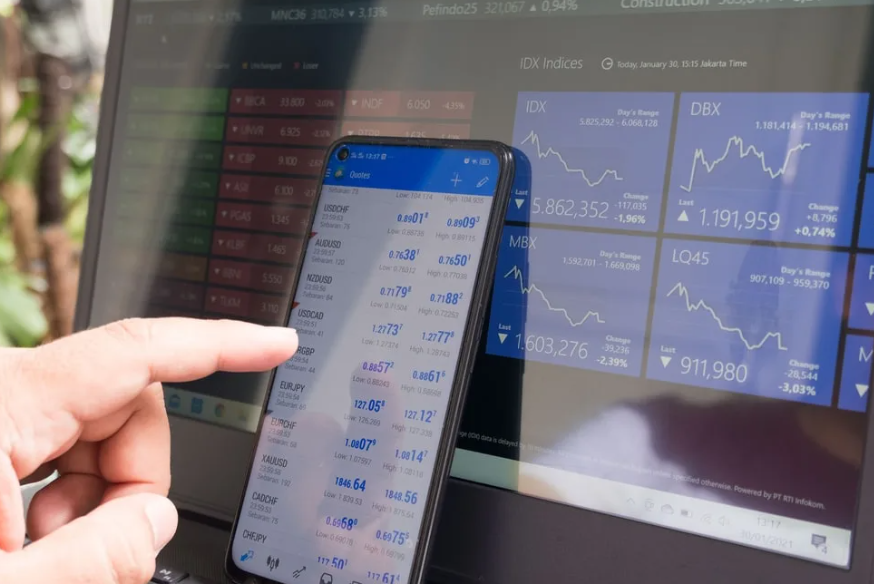5 ways to save for your child's future

Whether you want to send your child to college, help pay for their home, or plan for life events like marriage, it's never too early (or late) to start saving for your child's future. You don't need a lot of money to invest, only the right financial products.
This article looks at long-term investment plans that could be beneficial for you if you want to save for your child's future.

If you are willing to take on some risk then you could open a trading account for your child. Rather than cherry-picking individual stocks, you might want to consider investing in mutual funds and exchange traded funds (ETFs), which are simple ways to invest in a package of stocks, bonds, and other securities.
These funds are managed by a fund manager who will oversee the trading and selling for you, allowing you to "watch your money grow." Moreover, your child will be able to withdraw money at any given moment, with the remainder in the account being continually invested.
In Singapore, setting up a mutual fund might require a high deposit, yet the rate of return renders it a good long-term investment.
If you would like to begin investing with as little as S$100 for either a short or long-term period, exchange-traded funds could be an interesting alternative. Unit trusts, on the other hand, tend to have lower fees.

If you prefer not to use a mutual fund but still want to invest in the market, a regular savings plan could be a good fit for you. With a regular savings plan, you make monthly deposits which are invested into the market on your behalf. Depending on the type of account, usually low, medium and high risk, your profits can yield around three per cent-20 per cent per year.
However, regular savings plans can also yield negative returns, meaning this is better for those who want a long-term account to allow the market forces to balance out.
In Singapore, there are several options to choose from. You should consider the annual fees and average returns prior to selecting a provider.
If you want to save for a particular event like university, an education-focused endowment plan can help you. These plans combine high-interest rates savings accounts with life insurance.

Similar to a regular savings plan, you pay minimum monthly contributions in the form of premium payments. When the policy ends, you will receive your guaranteed return and any bonuses offered.
These bonuses consist of extra cash earned when the investment fund performs well, annual cash payouts (depending on the plan), and death benefits that will be paid out if you die during the policy term.
There are a couple of things you should be aware of with endowment plans.
First, there is a chance you may not get back 100 per cent of the premiums you put into the account. To avoid this, look for an endowment plan with a 100 per cent capital guarantee.
Another thing to consider is that the illustrated returns that you see on the marketing information of an endowment plan is not representative of your actual returns. For instance, even if your insurer's fund achieves a 4.75 per cent return, your actual returns on an endowment plan could range from 1.80 per cent-4.05 per cent.
Finally, an endowment plan locks you into paying monthly premiums. If you don't anticipate being able to pay these monthly amounts, you might find another option is better for you.
Bonds are great for people who want to invest in the market at low risk. Many people consider bonds safer as well, as they receive their initial investment once the bond matures.
In Singapore, you can invest in government-backed Singapore Savings Bonds (SSB) or corporate bonds. Those who prefer government-backed and very low-risk bonds might prefer the SSBs, whose May 2024 average annual return rates if held for 10 years is 3.33 per cent.
Investors with a higher risk tolerance might prefer a corporate bond as they may yield higher returns. For example, S&P Singapore's Corporate Bond Index estimated the annual rate of return in 2023 was 4.41 per cent.
With either option, it is generally recommended that you diversify products with different maturity, or "end," dates. Doing so will allow you to re-invest the returns into bonds and grow your wealth substantially.
If you are unsure about investing during the current economic climate, you can always open a savings account for your child.

Since these accounts are no-risk, your profits will be lower than market-based investments. That being said, some high-yield savings accounts offer effective interest rates (the highest actual return possible based on account activity) of up to 4.65 per cent a year, which is favourable compared to the average effective rate of 0.05 per cent per year for many generic savings accounts.
With a variety of accounts to choose from, it is worth "shopping around" to choose the best option available.
Fixed deposit accounts are good for parents who are more wary about investing in the market and prefer to deposit money on a regular schedule. While they do require an initial deposit, these accounts are low-risk and have guaranteed returns. Interest rates tend to vary depending on the length of time you sign up the account for and your initial deposit.
In order to make the best decision possible, you should consider a variety of factors. For example, if you prefer to make monthly payments, you might wish to consider a regular-pay education endowment plan or fixed deposit account.
However, if you would rather pay a high deposit and "watch" your money grow and you have a higher risk tolerance, you might benefit from investing into a mutual fund, high-yield savings account, or bonds.
Moreover, if you are more wary about putting a lot of money into the account up-front but want market-growing returns, an ETF or savings account could be worthwhile.
It's also important to think about when your child might wish to use the money. If you would like them to have the option to take out money at their own discretion, you should get an account or fund with no set termination date.
Whatever is left in the account after their withdrawal will continue to grow. No matter what you eventually decide, you are making an investment for your child's future.
ALSO READ: Mistakes I made when teaching my kids about budgeting
This article was first published in ValueChampion.